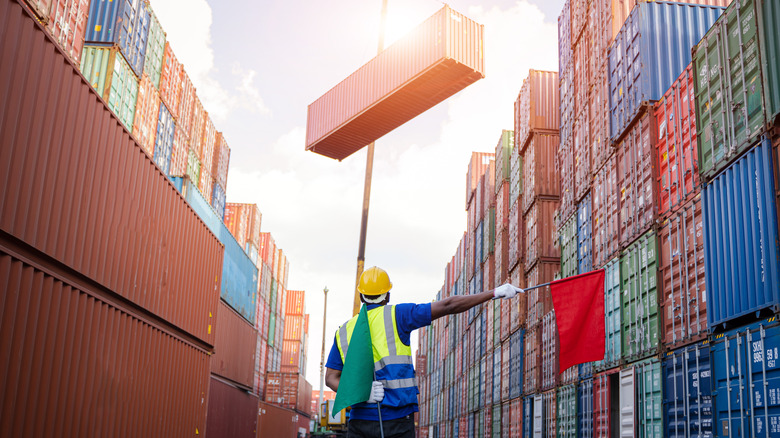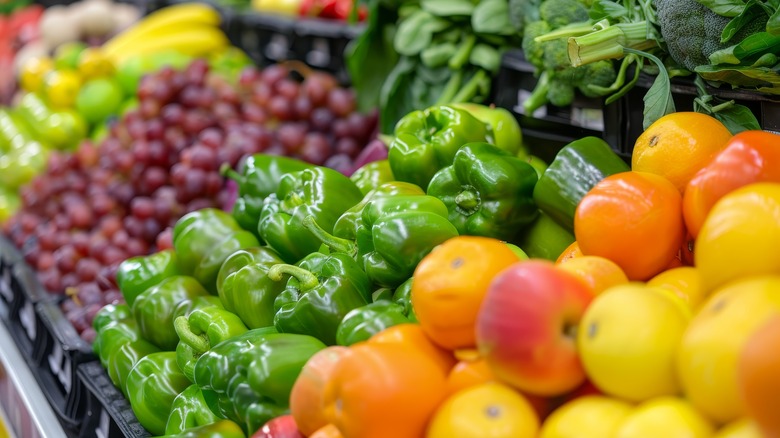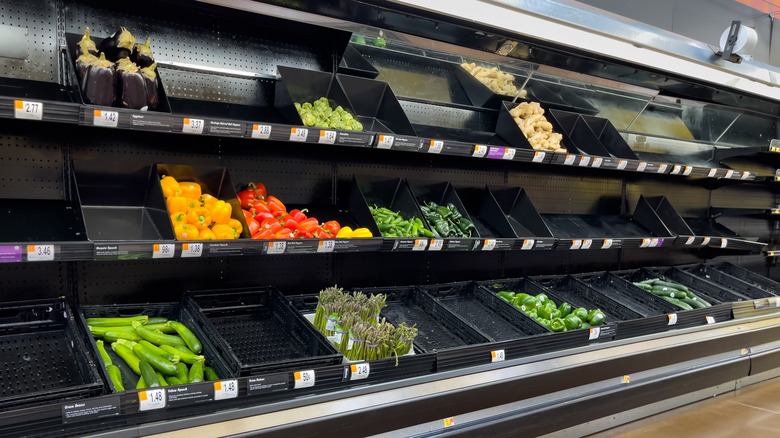US Dockworkers' Strike Could Make It Difficult To Get These Grocery Items
After weeks of stalled negotiations, The International Longshoremen's Association (ILA) stated that almost 50,000 of its members would begin a coast-wide strike beginning Tuesday, October 1, 2024. It's the first such strike by the organization since 1977 and represents a major shakeup in the supply chain, particularly on the East and Gulf Coasts. The primary goal, according to the ILA, is a pay increase for each of the six years of a new contract once it's reached with the United States Maritime Alliance (USMX), along with protections against automation. The ILA said the strike is expected to last until its members' demands are met.
Almost half of all U.S. imports move through the 36 affected ports, which means significant supply chain interruptions. How will this affect shoppers? It's too early to tell for certain, but according to CNBC and other outlets, the effects could be staggering, particularly on the heels of the devastation left by Hurricane Helene. Adam Kamins, an economist with Moody's Analytics, was quoted by CNBC as suggesting an strike of a week or two may only create backlogged orders (think bananas vanishing from store shelves for a few days during a snowstorm), but a protracted strike could lead to "shortages and upward price pressures."
In fact, the strike may indeed impact your banana supply, along with other imported goods. Items from cherries to tequila and chocolate to rum are all at risk of being stuck on ships and in containers at port until the strike ends.
Import items are most at risk for shortages
While the strike could seriously impact American farmers who rely on export markets, it makes sense that foods and other goods that are predominantly imported stand to experience shortages if the strike lasts for more than a few weeks. But it's sometimes a bit surprising to realize just how international many of our staple products are. According to Quartz, both grocers and restaurants could face significant supply chain issues, particularly with perishable goods. Quartz cites the American Farm Bureau as noting that 75% of the bananas shipped into the U.S. come through those ports.
But that's not all. Most cherries, chocolate, hot peppers, and imported canned foods come through those ports, according to Quartz. Many wines and spirits are also region-specific and are required by law to be produced outside the United States. Scotch, tequila, Champagne all must be made in specific places overseas. The bulk of the rum Americans drink is from the Caribbean and Central America and run through the East Coast and Gulf Coast ports.
It could get harder to find some basics
According to the USDA, almost half of all sweeteners (including processed sugar) are imported into the U.S. Almost 40% of fruit and tree nuts are imported, as are almost half our vegetables and melons. Specifically, among the most-imported vegetables are bell peppers, cucumbers, and asparagus, all from Mexico. While some of these goods are shipped overland, many arrive by boat. As winter approaches, a higher number of fruits and vegetables in restaurants and store shelves are imported from countries with longer or later growing seasons.
The best advice for shoppers is don't make panic purchases. Stock up on things you use regularly, but try not to hoard (many specific food goods are needed by people with dietary or economic restrictions, and hoarding directly impacts people's lives). Check multiple retailers as well as online, as some may be procuring their goods through alternate ports or venues. Consider alternative products, or plan on going without an item for a few days or weeks. And remember that the strike will eventually end and shelves will be restocked (if they're even emptied at all).


